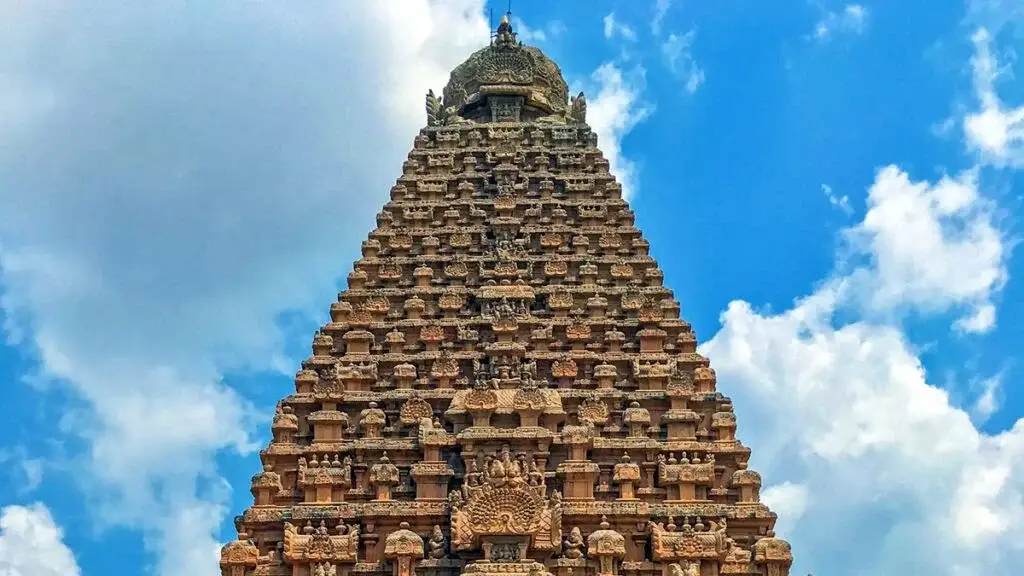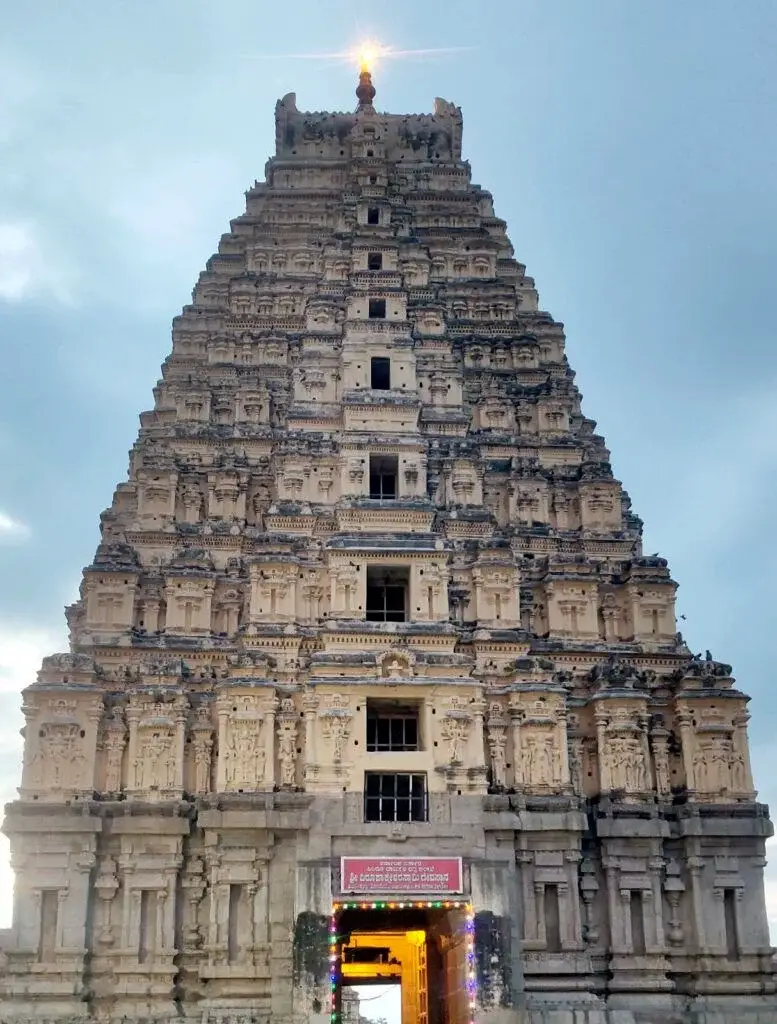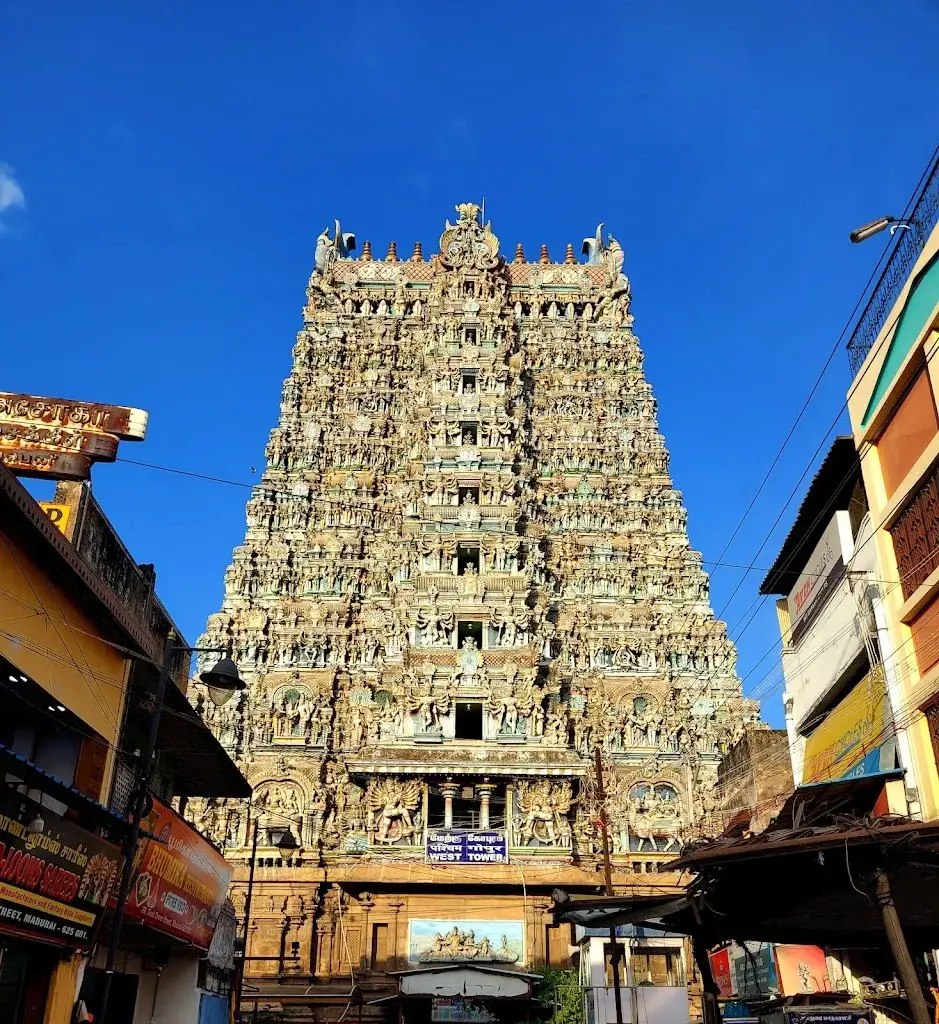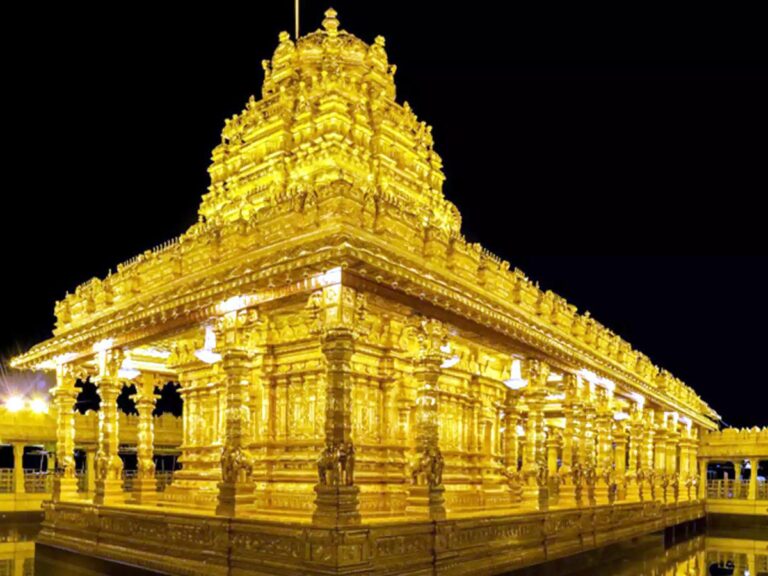Mind Blowing Facts About Temple Gopurams
Hello there let us know about, The Secret Architecture of Temple Gopurams That Architects Don’t Want You to Know! Let’s imagine you are standing in front of a huge, bright, and really tall building, just about reaching the clouds. Suppose I told you that this building is a sort of special, open-armed hug for a temple, and it is known as a Temple Gopuram? That’s what we’re going to discuss today! I am an architect, and I enjoy designing buildings, particularly ones that are as lovely and significant as these temple gateways.

When I was your age, my grandparents used to bring me to temples. I remember standing under these gigantic towers, with so many small statues and colourful carvings, and feeling as if I was entering a magical realm. That sense of awe is still in me, and it is why I am so intrigued by Temple Gopurams. They are not merely large doors; they are more like the biggest hello you can think of to a sacred area.
Contents
What is a Temple Gopuram?
So, what is a Temple Gopuram? Let me tell you. Picture a huge gate, a tower, standing at the entrance of a Hindu temple. It’s usually the tallest structure in the temple complex, rising high up into the air. Imagine a gorgeous archway, but really, really larger and more magnificent, usually covered in hundreds of statues of gods, goddesses, mythical beings, and ancient myths. Like a gigantic stone storybook! These towers are particularly prevalent in South Indian temples, and they’re a wonder to see. Each Temple Gopuram is unique, like a fingerprint, telling its own story through its intricate carvings.
The Origins of the Temple Gopuram
Have you ever stopped to think where these incredible buildings came from? The concept of a Temple Gopuram did not just suddenly occur overnight. It developed over hundreds and hundreds of years. At first, temples were much less complicated. They didn’t have as big or impressive gates as these massive gopurams of today. However, as kingdoms became powerful and people wished to demonstrate their loyalty and prosperity, these entry gates began to get larger and more ornate.
Suppose there was a king who wished to construct the greatest temple the world had ever seen. He would not construct a plain door, would he? No, he would desire a magnificent entrance that would make people exclaim, “Wow!” So, the Temple Rajagopuram became a means of demonstrating how great the temple and the kingdom were. It was also a means of greeting pilgrims from far and wide, ushering them into a holy place for prayer and contemplation.
The original Temple Gopurams were much less elaborate, maybe only a festooned doorway. But over time, they increased in size and sophistication, becoming the towering works of art we marvel at now. It’s as if observing a small seedling develop into a vast, lovely tree!

The Meaning of the Temple Gopuram
The Temple Gopuram is more than an attractive gateway; it’s deeply meaningful. Imagine it as a symbolic passage from the external world that’s full of mundane concerns to the serene, spiritual realm within the temple. When you walk through a Temple Rajagopuram, you are effectively leaving your issues behind and entering a realm where you can be connected with something higher.
Most people think that the Temple Gopuram symbolizes the feet of the god within the temple. Hence, when you fold your hands or bow before it, you’re paying your respects to the divine energy. It is even thought to safeguard the temple from the negative energies, similar to a cosmic shield. There’s a lovely Tamil proverb that goes something like: “கோபுர தரிசனம் கோடி புண்ணியம்” which translates to, “Seeing the gopuram bestows millions of blessings.”
Is that not lovely? What it says is that it is possible to get good luck and peace by just viewing a Temple Gopuram. For architects like me, realizing the profound meaning behind this is as crucial as learning how to construct it. We’re not building mere buildings; we’re assisting in creating hallowed experiences.
The Temple Gopuram Architecture
Now, let’s discuss how such wonderful structures are constructed. That’s where my architect mind gets extremely thrilled! The structure of a Temple Gopuram is just stunning. They’re commonly constructed in a pyramidal form, tapering as they rise higher and higher. Think of placing countless, countless boxes over one another, each box slightly smaller than the one beneath it. That’s roughly the appearance of a Temple Gopuram!
The foundation of the Temple Gopuram is typically made of solid stone, providing it with a firm base. As it goes upward, it’s sometimes wrapped in layers of intricately carved sculptures. These sculptures aren’t random; they’re stories of Hindu myth, depicting gods, goddesses, celestial bodies, and scenes from epic stories. It’s a giant comic book carved out of stone! The level of detail is so high that at times I just stand there, gazing for years, attempting to absorb it all.
And the colors! Much of the Temple Gopurams are highly colored, with bold shades of red, blue, green, and gold. This enhances their majesty and makes them even more intriguing. The Temple Rajagopuram is usually topped with a set of embellishing kalasams, which resemble pots or urns, that complete its grand look. Every aspect of the Temple Gopuram is well thought out and done, a demonstration of the phenomenal expertise of the ancient architects and sculptors.
Construction Style of the Temple Gopuram
How a Temple Gopuram is constructed is amazing, and it indicates how intelligent the old builders were. The ancient builders mostly used stone, particularly granite, which is a very robust and long-lasting material. Try to visualize lifting enormous slabs of stone without cranes nowadays! They employed clever methods such as ramps and rollers to transport these enormous stones into place.
The building of a Temple Gopuram typically consists of multiple tiers or levels. Each level is constructed on top of the other, decreasing in size step by step to create the pyramid structure. The sculptures and carvings are sometimes carved on individual pieces of stone prior to assembly, or sometimes in situ after the building has been erected. This demands enormous accuracy and coordination.
Inside a Temple Gopuram generally consists of stairs to access multiple levels, and sometimes even a small shrine at the topmost level. The engineering that goes into constructing so tall and sturdy a structure without the aid of contemporary machines is simply astounding. It’s a testimony to the profound understanding of geometry, physics, and art these ancient architects and artisans had. When I glance at a Temple Gopuram, I don’t only notice a building; I notice centuries of human skill and faith.

Five Impressive Temple Gopuram Examples
Tell me about some of my personal favorite Temple Gopurams highlighting various styles and tales!
Meenakshi Amman Temple, Madurai, India: Oh, wow, this temple is just amazing! It contains four huge Temple Gopurams, one at each of the four entrances, and they are amongst the tallest and most carved out in India. Every Temple Gopuram is adorned with thousands of colorful figures of gods, goddesses, and mythological beasts. When you face them, it seems like the entire universe is painted on these towers. The Temple Gopuram of the south is most well-known for its height and sheer quantity of sculptures.
Brihadeeswarar Temple, Thanjavur, India: The Big Temple is one of a kind when it comes to its Temple Gopuram. It may not be as tall as some, but it’s astounding in that it is totally constructed of granite, including the enormous capstone atop! It’s a wonder of ancient engineering. The architecture here is a typical example of Chola dynasty style, which is famous for its solidity and grandeur. The central tower of the temple is also quite tall, but the Temple Rajagopuram at the entrance prepones it to its greatness.
Chidambaram Nataraja Temple, Chidambaram, India: This temple is a shrine to St. Lord Shiva as the cosmic dancer, Nataraja. It boasts four magnificent Temple Gopurams, one each facing a cardinal direction and richly decorated with stunning carvings of Hindu mythologies, particularly those connected to the dance of Lord Shiva. The East Temple Gopuram is especially renowned for illustrating the 108 karanas (dance poses) of Bharatanatyam, an Indian classical dance form. It’s almost like a dance academy in stone!
Ranganathaswamy Temple, Srirangam, India: This temple complex is one of the largest in the world, and it has an astounding 21 Temple Gopurams! The main Temple Gopuram, known as the Rajagopuram, is the tallest in Asia, standing at over 236 feet! Imagine how tall that is! It’s like a giant welcoming committee for this massive temple city. The sheer scale and number of Temple Gateways here are simply mind-boggling.
Virupaksha Temple, Hampi, India: Located in the ancient city of Hampi, a UNESCO World Heritage Site, the Temple Gopuram of the Virupaksha Temple is very distinctive. It’s not as adorned with thousands of statues as some others, but its sheer size and impressive stone masonry are captivating. It stands tall against the backdrop of the rocky landscape of Hampi, giving it a majestic and ancient feel. The architecture in this place speaks volumes of the splendor of the Vijayanagara Empire.

Present Style: Old vs. New Temple Gopurams
You see, just as our fashion changes with time, buildings do too! The Temple Gateways has undergone a little transformation too.
Old Style Temple Gopurams:
The older Temple Gopurams, such as the ones I was explaining to you, were constructed with amazing detail. They were usually created by master masons and sculptors who worked all their lives on refining their skills. The sculptures were highly detailed, usually illustrating religious narratives in a highly conventional style. The materials were largely stone, and the methods of building were based on ancient wisdom shared over generations. These older Temple Gopuram monuments carry a timelessness about them, full of the feeling of history and deep artistry. They were usually constructed over decades, even centuries, demonstrating the patience and perseverance of the constructors.
New Style Temple Gopurams:
We still construct tall Gopurams today, but occasionally they appear a bit different. Although the traditional designs remain extremely popular, contemporary Temple Gopurams may occasionally include new materials such as concrete or steel, which can speed up construction. At other times, the sculptures could be produced from molds or even painted, as opposed to being hand-carved as meticulously as the ancient ones. Though they retain the same symbolic significance, the artistic presentation may differ. Occasionally, new Gopurams may also be constructed with brighter, near-neon hues.
I always seek to learn from history. New technologies are wonderful, of course, but there’s something inherently magical about the hand craftsmanship of the old Temple Gopuram. The devotion, the patience, and the artistry involved in creating them are something we can all learn from. But old or new, each Gateway fulfills its lovely function: to invite you into a world of peace and devotion.
So the next time you come across a Temple Gopuram, either in a photograph or on the ground, don’t forget its history. Don’t forget that it is not simply a large structure; it is an entrance to divinity, a work of art, and an icon of human belief and engineering. Who knows, perhaps one day you will be creating amazing structures like these too! It is such a great feeling to develop something that motivates and inspires people, and that is what the Temple Gopuram exactly does.












